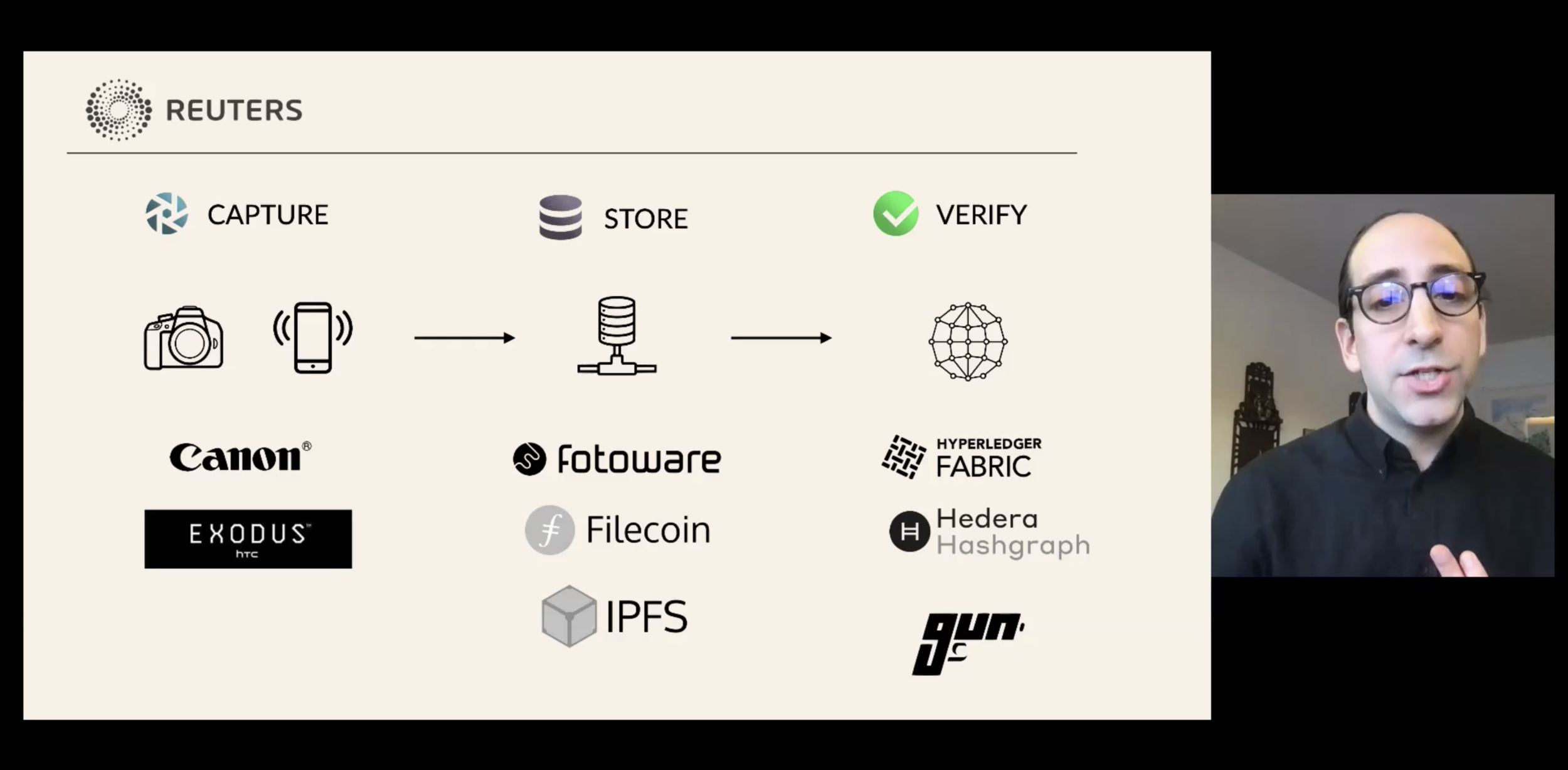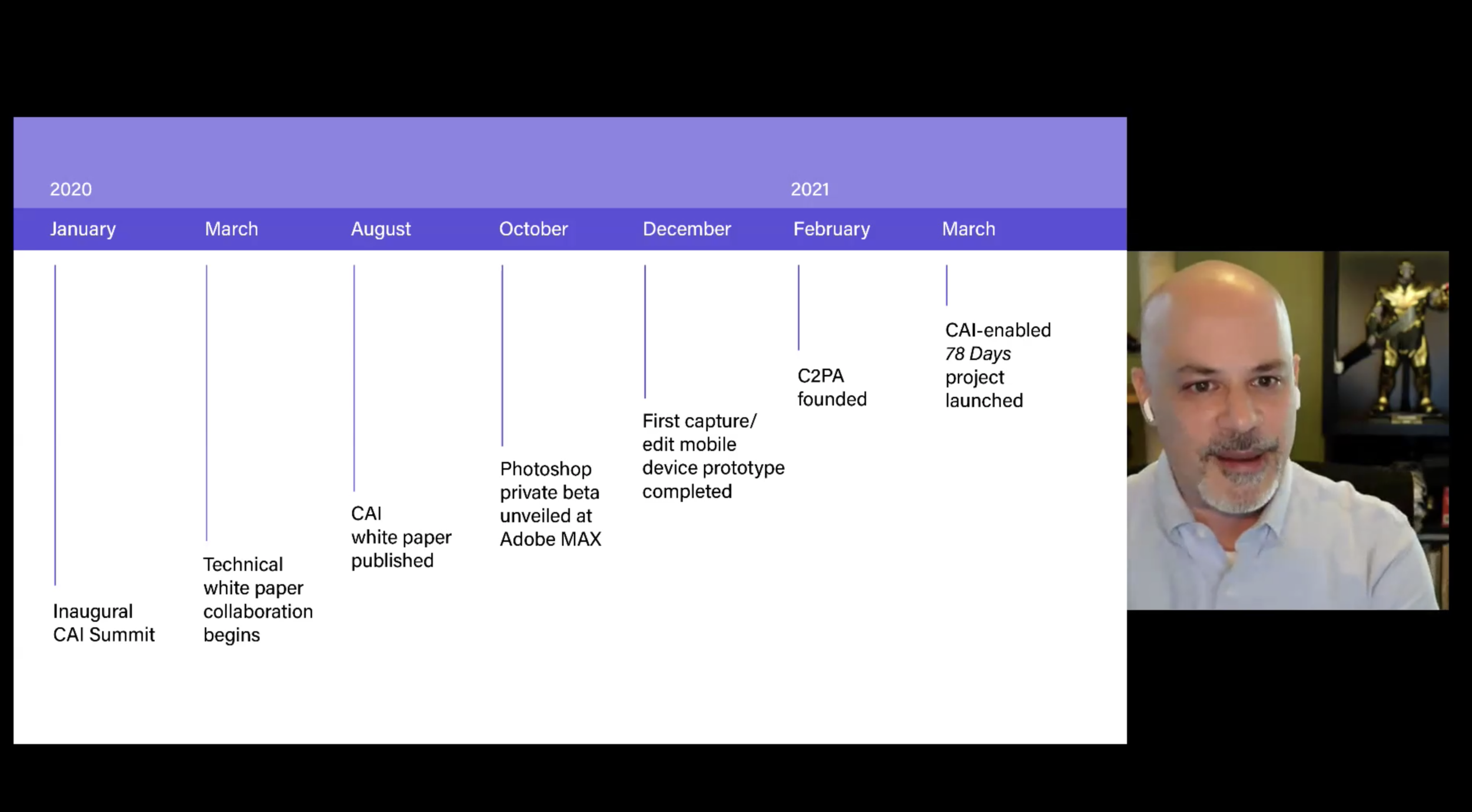The Future of Trust in Photojournalism: CAI Members’ Event Recap
On March 31, we hosted our first members’ community event (virtually, of course): The Future of Trust in Photojournalism. The highlight was a fantastic conversation featuring Reuters photojournalist Lucy Nicholson and Stanford Center for Blockchain Research fellow and Starling Project co-founder Jonathan Dotan. Our head of Education and Advocacy, Santiago Lyon, led the conversation that centered around the work Reuters and the Starling Project did starting in March 2020 through the release of the 78 Days secure photojournalism archive in February 2021.
Jonathan laid out the work of the Starling Project (you can find much more on their website, which does an excellent job of explaining the technology behind the end-to-end process they tested through the 78 Days project). The Starling team also prototyped the process of capture-to-publish with Reuters photojournalists covering the California primaries in March 2020 and developed a process of secure capture (on mobile phones, as well as a Canon DSLR), distributed storage, and verification of images. Lucy Nicholson was one of the photographers who contributed and whose work inspired the resulting 78 Days project, shot from the time between the November 2020 election to the transfer of power on Inauguration Day in January 2021.

Lucy weighed in from the perspective of a working photojournalist with a compelling case for why a new layer of trust is needed within visual content, now more than ever before. She explained, “As documentary photojournalists, we try to represent the truth of news events—and the visual context of news events—as best as we can. We typically do that by sharing a wide range of photographs, to show context, and to allow an audience to make up their minds about something. Disinformation, up until now, has had abstract effects on our lives as photojournalists. In the last year in particular, it’s had very tangible effects on journalists’ physical safety.”

Attaching secure metadata to photographs “gives some integrity to the photo and helps us with our task of explaining to the public the value of news photojournalism. We are ambassadors of media literacy. That has become our job; it never used to be. It’s imperative that we all play a part in that.” Lucy added this valuable context. She followed up by saying that it is important to discover and use “any technical tools that can help retain the integrity of photojournalism and uphold the responsibility we have to show people we photograph and document in a vulnerable place in their lives we’re trustworthy.” We need to reestablish trust in photojournalism, not just for consumers and readers, but for the subjects of news at home and abroad. It is a human rights issue.
Jonathan reiterated the importance of protecting photojournalists and laid out two techniques to do so through the Starling project’s findings. First, there is a way to digitally sign data so we can prove the photo was taken in a certain time and place (should the photographer choose to disclose those—which is a reminder that privacy is one of the underlying principles of the CAI). The other form of protection is to seal photos on a camera device itself, in case the camera is seized or the photographer is arrested. For both reasons, it is crucial to have camera manufacturers involved in our work. As Jonathan pointed out, “phones have more advanced cryptographic tools than most camera devices. Consumer hardware can bridge the gap of what professional cameras cannot do right now. And this all should remain open source, so code is available to all. Starling, along with other human rights organizations, feels very strongly about this so that these tools will not be turned into tools of surveillance.” Open technology coupled with a layer of ethics is essential for protecting photojournalists.

A crucial part of the work that the CAI is doing centers around convening “all the right players,” as Jonathan mentioned. He went on to say, “How extraordinary it is that everyone who has a stake in this—the commercial side, NGOs, academics, and more, are all in the same room here. We have an incredible opportunity to shape this dialogue within the CAI, which means it’s not just a catalyst for technical development, but also work around user literacy as we capture the transition from unauthenticated photographs to authenticated photos.” We at the CAI absolutely agree and are focused on continuing this kind of community facilitation and the prototype support we gave to Reuters and the Starling Project and look forward to similar collaborations in the future. If you are interested in being involved, from any stage of the capture-to-publish process, please reach out (see below).

As CAI director Andy Parsons mentioned in closing the event, no single organization can build the crucial layer of trust on the internet. In founding the C2PA, Adobe is furthering its commitment to open standards while the growing, diverse CAI community furthers the mission with discourse, prototypes, and input to guide. We at the CAI are proud of what we have done so far with emerging standards, but we have a long journey of development ahead. We welcome diverse use cases, ideas, and collaboration. To connect, reach out to us via email. And look forward to C2PA draft specifications being publicly available later this year.
We fielded so many thoughtful questions at The Future of Trust in Photojournalism—beyond what we were expecting—so thanks all for being so engaged! We're folding in many of these to the FAQ section on our site, which we’re in the process of updating. More on that soon.

Plans are under way for our next event, which will be open to members of the Content Authenticity Initiative. If you are not yet a member of the CAI, you can join us in our free, inclusive membership here. If you’re already a member, we encourage you to share the membership page with any interested colleagues or collaborators.